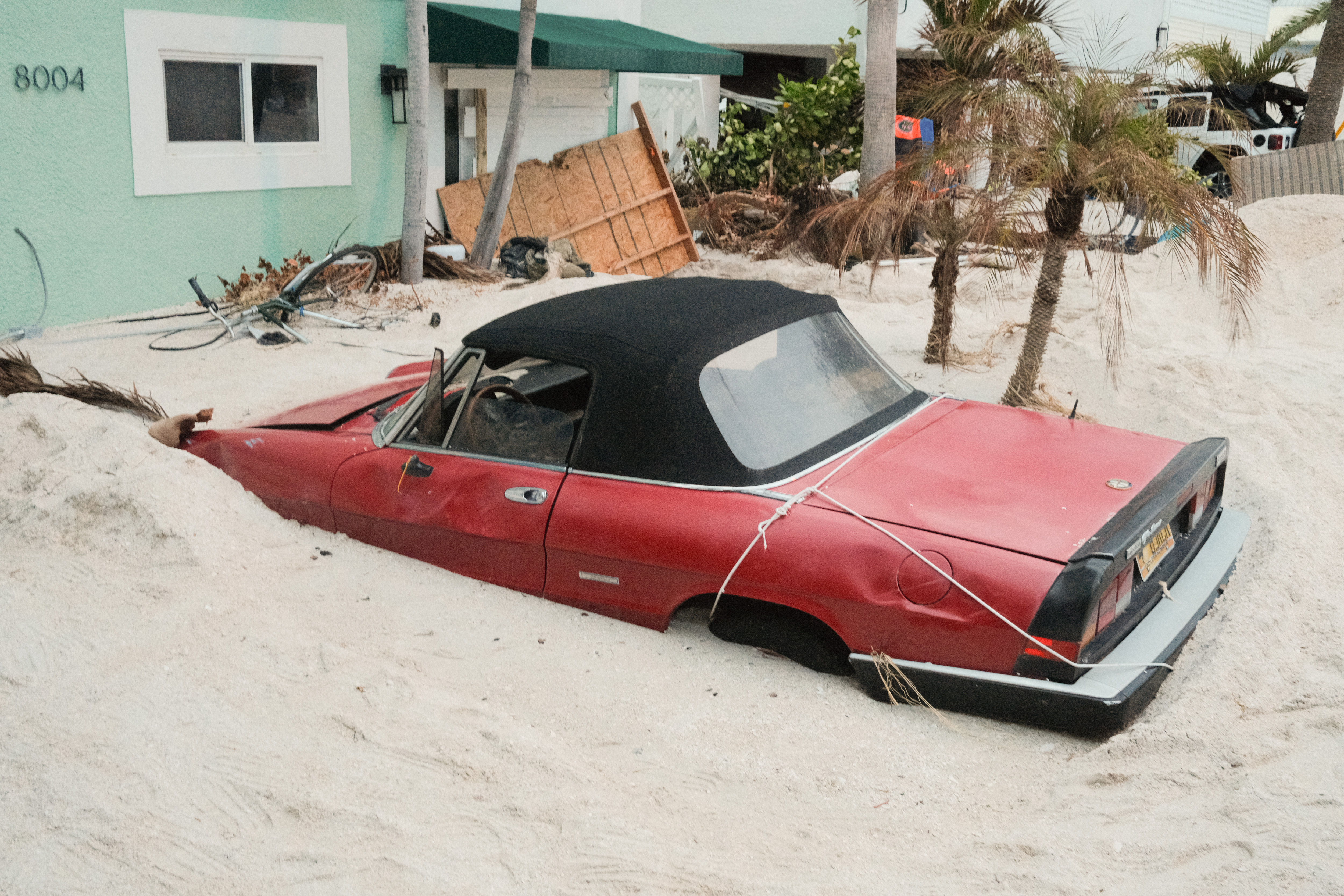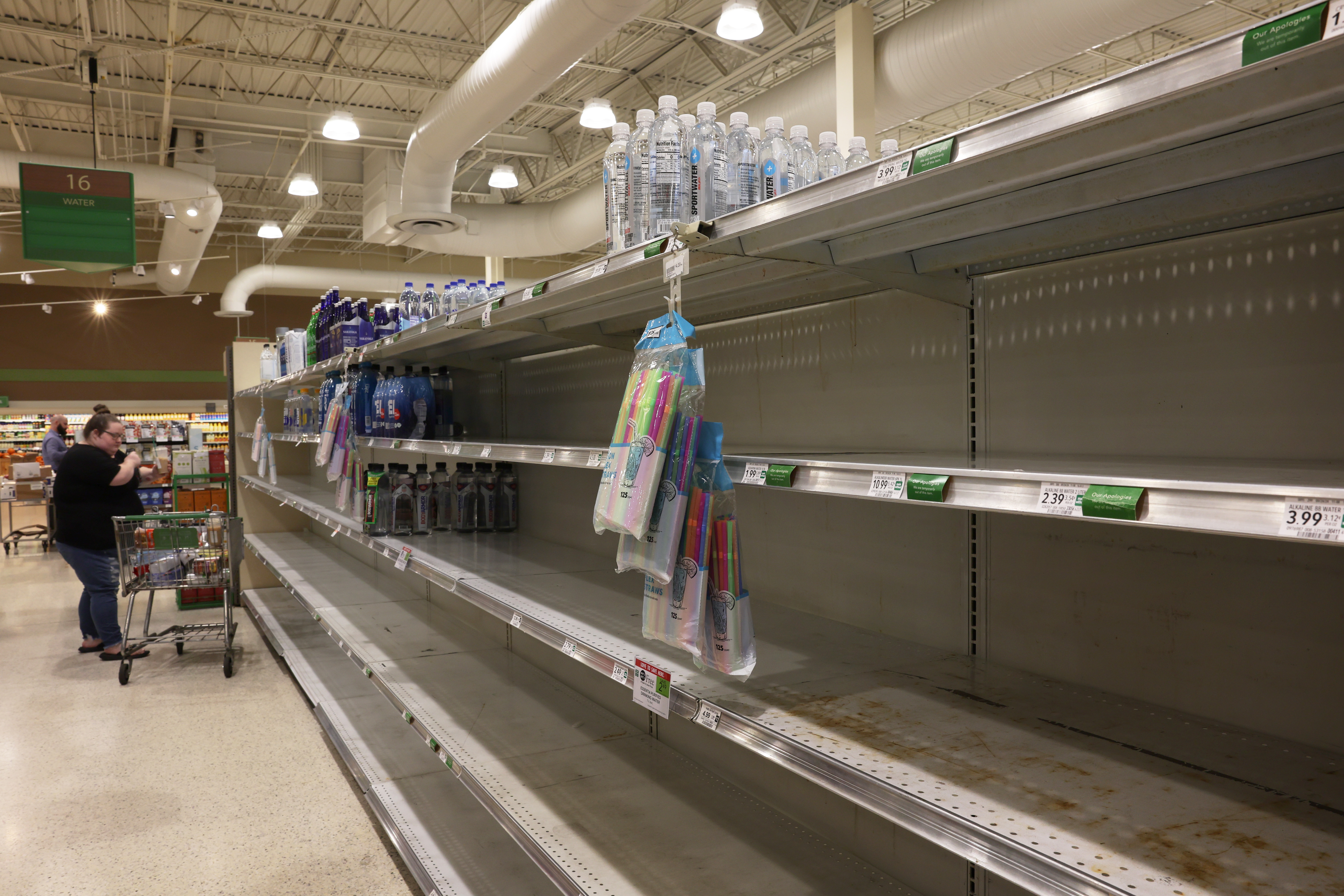As Hurricane Milton roars toward Florida’s Gulf Coast, residents brace for what could be the most devastating storm in over a century. With immense storm surges, intense winds, and dire warnings from meteorologists, the region is on high alert. Evacuation orders have been issued across the coast, and officials urge everyone to prepare for potentially life-threatening conditions. Here’s what you need to know about Hurricane Milton, the evacuation zones, and how to stay safe as the storm approaches.

Hurricane Milton: A Record-Breaking Storm Approaches
Hurricane Milton has intensified to a Category 5 storm, a level reserved for the most destructive hurricanes on the Saffir-Simpson scale. With wind speeds exceeding 157 mph, the National Hurricane Center has issued a stark warning about the potential impact on the Gulf Coast. According to forecasts, the storm could cause extreme damage, with entire neighborhoods facing the threat of roof collapses, flooding, and even uninhabitable conditions for weeks or months.
Adding to the danger, storm surges are projected to reach up to 12 feet in some areas, surpassing recent flooding levels from previous hurricanes like Hurricane Helene. Meteorologists are comparing Hurricane Milton to some of the most infamous storms in history, noting that Milton’s impact could easily rival the destruction seen with storms like Irma (2017) and Betsy (1965). With the Gulf Coast already strained from past storms, Hurricane Milton could be the storm of the century.
Warnings from Officials: The Urgent Call to Evacuate
As the storm approaches, local officials are issuing some of the strongest evacuation orders in recent history. Tampa Mayor Jane Castor didn’t mince words when she addressed residents in evacuation zones, warning, “If you stay in one of those evacuation areas, you’re going to die.” Her blunt message reflects the gravity of the situation and highlights the life-or-death urgency of evacuating before Hurricane Milton arrives.
This sentiment is echoed by Pinellas County Sheriff Bob Gualtieri, who described the storm as one of the most serious threats to the area in decades. He urged everyone to take the evacuation orders seriously, calling on all residents to leave before it’s too late. Florida Governor Ron DeSantis also emphasized the danger of debris left behind by previous storms, which could exacerbate Milton’s impact. In short, those who choose to stay behind may find themselves stranded, with emergency services unable to assist once the storm intensifies.
Evacuation Efforts in Full Swing as Residents Flee the Gulf Coast
As evacuation orders are rolled out, thousands of residents are hitting the road, seeking shelter away from the storm’s projected path. Highways like Interstate 75 are already congested as residents head north toward safer areas. The scene is one of urgency, with cars packed with families, pets, and essentials, all hoping to escape the storm’s wrath.
For coastal towns that have been battered by previous hurricanes, the evacuation feels all too familiar. In places like Fort Myers Beach—where Hurricane Ian caused extensive flooding just two years ago—residents aren’t taking any chances. Streets are emptying as people secure their homes and leave, hoping to avoid a repeat of the devastation caused by past storms. Those who remain are racing against time, boarding up windows and gathering last-minute supplies.
Mapping Out Evacuation Zones and Routes
Knowing the designated evacuation zones is crucial as Hurricane Milton draws closer. The Florida Division of Emergency Management has provided a valuable tool for residents to determine their evacuation zones. The “Know Your Zone” tool allows people to input their address and instantly find out if they’re in a high-risk area.
This mapping tool is critical for planning a safe and efficient evacuation. Areas closest to the coast and particularly vulnerable to storm surges have been ordered to evacuate immediately. Officials are urging residents in these zones to familiarize themselves with their routes to the nearest shelters and to leave as soon as possible. For those staying behind, the risk is high, as emergency responders may not be able to reach them once the storm makes landfall.
The Threat of Storm Surges: A Major Danger for Coastal Areas
One of the most dangerous aspects of Hurricane Milton is the storm surge it’s expected to bring. Forecasts predict that some areas could see water levels rise by as much as 12 feet. This surge poses a severe risk to communities along the coast, where even a few feet of water can cause catastrophic flooding and damage.
Storm surges have historically been one of the leading causes of death in hurricanes. The force of the surge can sweep away homes, cars, and anything else in its path. Residents in vulnerable areas are being told to evacuate immediately, as waiting until the last minute could leave them stranded. Coastal areas from Tampa Bay to Naples are particularly at risk, with officials warning that the surge could render some areas uninhabitable for weeks.

A damaged vehicle stuck in sand swept up by Hurricane Helene ahead of Hurricane Milton’s landfall in Treasure Island, Florida, on October 7, 2024 | Source: Getty Images
Comparing Hurricane Milton to Past Devastating Storms
Hurricane Milton is drawing comparisons to some of the most devastating storms in recent memory. Residents recall the destruction of Hurricane Irma in 2017, which caused widespread damage across Florida, and Hurricane Betsy in 1965, which left a lasting impact on the Gulf Coast. But what sets Milton apart is the sheer intensity of its winds and the scale of the anticipated storm surge.
Many are also comparing the storm to Hurricane Helene, which recently caused severe flooding in the region. With debris from past storms still littering some areas, Milton’s potential for destruction is magnified. This debris could become dangerous projectiles in high winds, and clogged drainage systems could worsen flooding. In short, Hurricane Milton has the potential to eclipse the destruction left by previous storms, leaving a lasting impact on the Gulf Coast.

Shelves at a grocery store are empty as Hurricane Milton churns in the Gulf of Mexico , on October 7, 2024 | Source: Getty Images
Preparing for Hurricane Milton: Essential Safety Tips
If you’re in an evacuation zone or even near the projected path of Hurricane Milton, now is the time to prepare. Here are some essential tips to ensure your safety during the storm:
- Heed Evacuation Orders: If you’re ordered to evacuate, leave immediately. Staying behind can put your life in danger, as emergency services may not be able to reach you.
- Stock Up on Essentials: Gather enough food, water, medications, and other necessities to last several days. Keep a first aid kit and any important documents in a waterproof container.
- Secure Your Home: Board up windows, secure loose items outside, and turn off utilities if instructed. Preparing your home can help minimize damage and reduce hazards.
- Map Out Your Evacuation Route: Use the “Know Your Zone” tool to find the safest route out of the storm’s path. Avoid major highways if possible, as traffic may be heavy.
- Stay Informed: Follow local news and official updates from the National Hurricane Center. Hurricane paths can change quickly, so staying informed is essential.

Piles of debris from Hurricane Helene remain uncollected ahead of Hurricane Milton’s expected landfall, on October 7, 2024 | Source: Getty Images
Conclusion: Hurricane Milton’s Potential Impact on the Gulf Coast
As Hurricane Milton barrels toward the Gulf Coast, the stakes couldn’t be higher. With potentially record-breaking winds and a catastrophic storm surge, the storm could leave a trail of destruction unmatched in over a century. The urgency of evacuation orders and the heightened alerts from officials underscore the dangers ahead. For those in the path of Hurricane Milton, preparing and evacuating now could make all the difference.
By understanding the risks, knowing your evacuation zone, and taking immediate action, you can protect yourself and your loved ones. Hurricane Milton is a reminder of nature’s power and the importance of preparedness. As the storm approaches, the focus is on safety, and the next few days will be crucial for those in its path.


